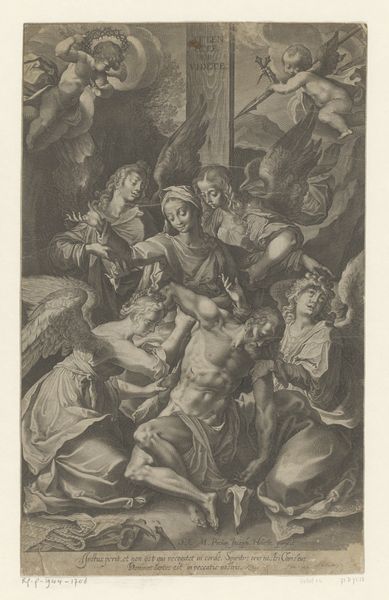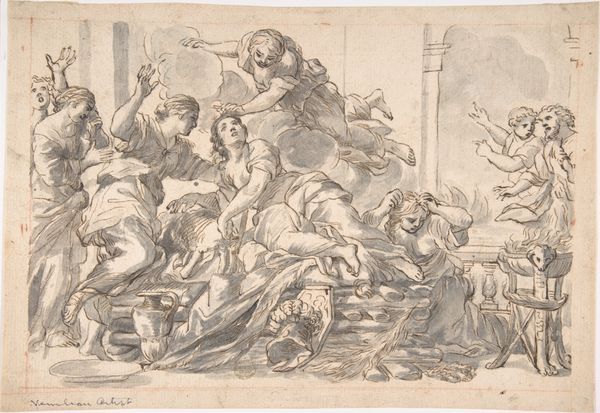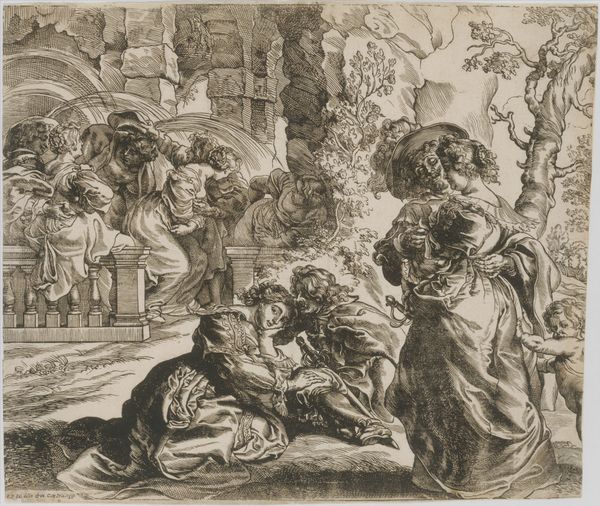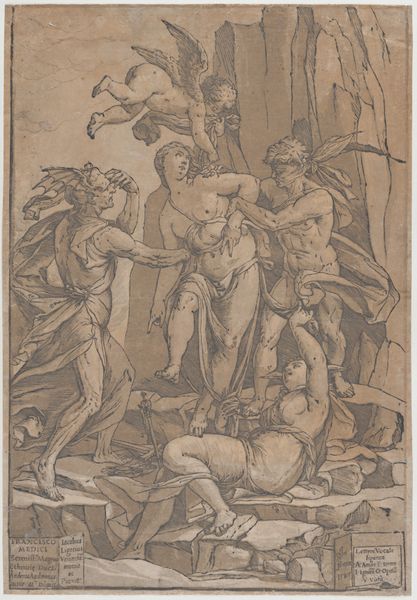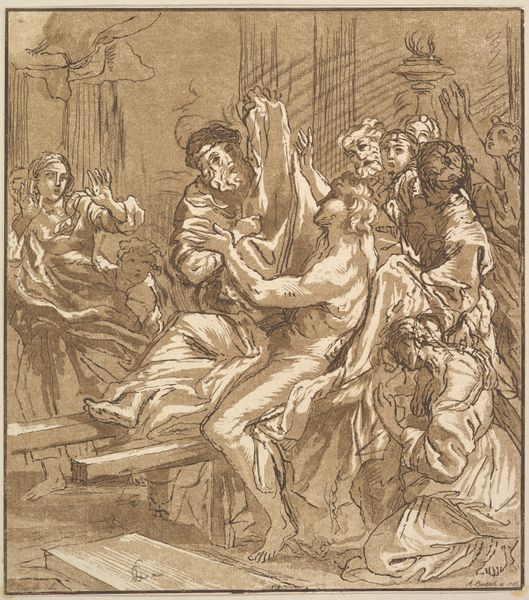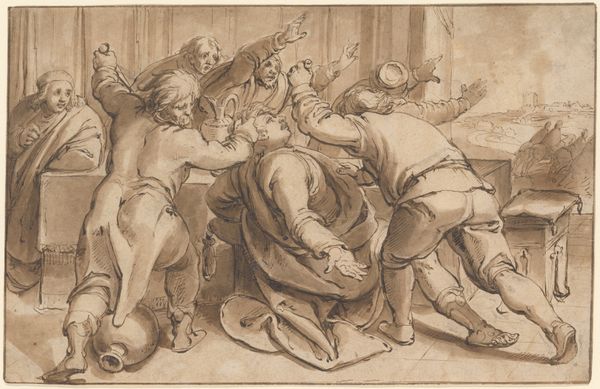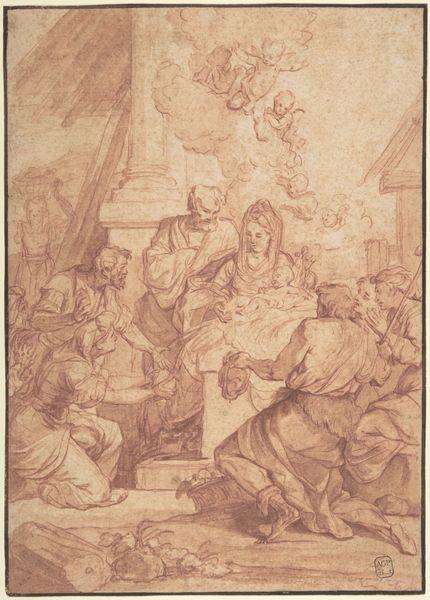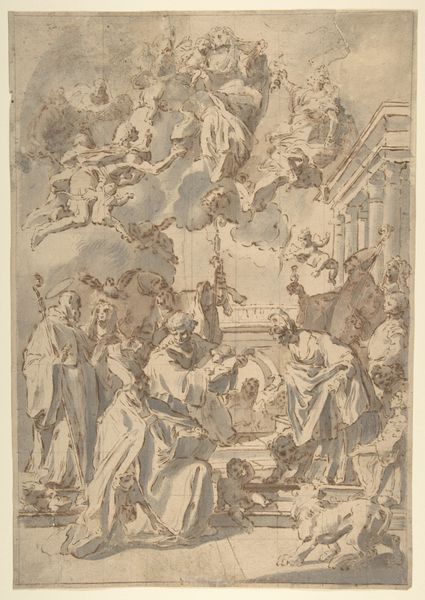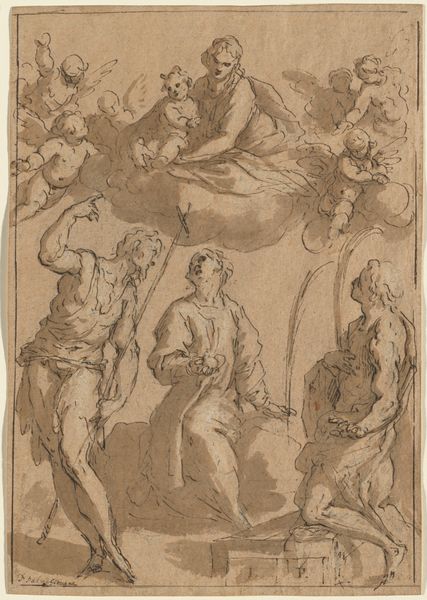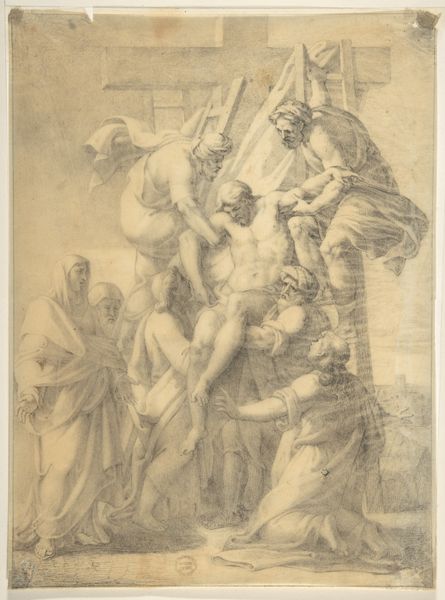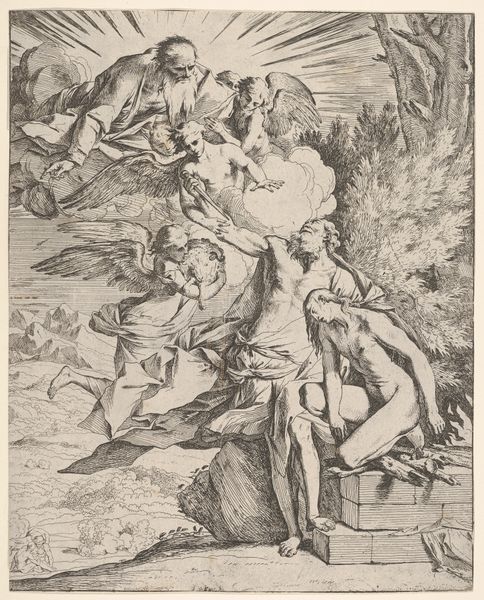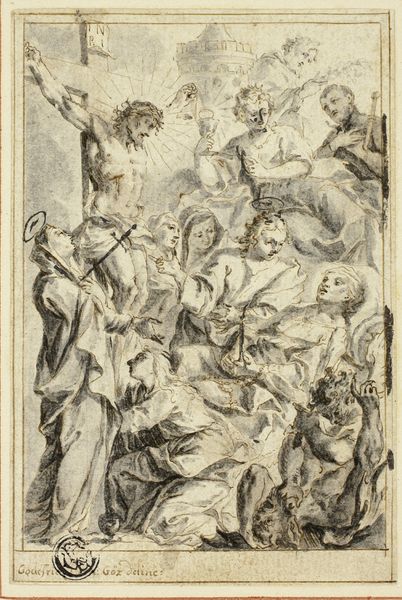
Massacre of the Innocents; group of women and children being attacked, two angels at upper left, after Reni 1635 - 1670
0:00
0:00
drawing, print, engraving
#
drawing
#
ink drawing
#
baroque
# print
#
pen sketch
#
pencil sketch
#
figuration
#
pencil drawing
#
history-painting
#
engraving
#
angel
Dimensions: Sheet (Trimmed): 18 3/16 × 10 3/8 in. (46.2 × 26.3 cm)
Copyright: Public Domain
Editor: So, this print from between 1635 and 1670, titled *Massacre of the Innocents; group of women and children being attacked, two angels at upper left, after Reni*, is attributed to Gian Battista Bolognini and located at the Metropolitan Museum of Art. It's rendered as an engraving, and the scene it depicts feels overwhelmingly chaotic and violent. What strikes you most about this piece? Curator: Immediately, the echo of Guido Reni's original painting is inescapable, even in Bolognini's interpretation. This engraving serves as a powerful example of the distribution of artistic ideas and the politics inherent in reproduction during this period. Consider how Bolognini's choice to replicate this scene - a massacre ordered by a King - might have been received in different social and political contexts. What statement do you think this print made through its circulation? Editor: It's interesting you bring up the politics of imagery. Given the horrors depicted, who was the audience? Were these prints meant as warnings against tyranny, or something else entirely? Curator: Exactly. It prompts us to examine the consumption and interpretation of violent imagery in art. Think about the role prints played in disseminating information, but also in shaping public opinion. Prints like this could have been used to stir anti-establishment sentiment, particularly if paired with suitable commentary. Or conversely, their wide distribution normalized this type of historical telling. Who commissioned the piece impacts its ultimate role, don't you think? Editor: That’s a really interesting point – the commission, distribution, and audience would have shaped the work's impact. Seeing it this way opens up entirely new perspectives! Curator: Indeed. This print shows how a work can become a tool in shaping sociopolitical awareness. Reflecting on art’s function as cultural record enriches our comprehension.
Comments
No comments
Be the first to comment and join the conversation on the ultimate creative platform.
